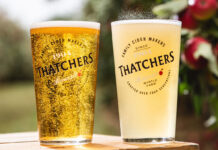Supplying the on-trade is no longer just about offering the best price, finds Scott Wright
THERE was a time when a wine merchant’s chief concern was finding the best wine for the customer at the most competitive price.
While that remains undeniably central to the suppliers’ function, not least in the current climate, today’s merchants are performing an increasingly wide range of roles for the outlets they serve.
It’s now common for suppliers to work closely with operators on wine list development, briefing staff on the characteristics and selling points of wines to help sell it to the consumer, and helping to put the list on the right commercial footing.
Some provide formal wine training qualifications (Inverarity Morton, for example, has its own training school), and most provide promotional support, helping the outlet market wines in venues and coming up with innovative promotions and themes to drive sales.
It’s little wonder, then, that one merchant said companies like his have to reach new levels of support and service to stay in the game.
“Wine merchants now have to be better than ever – more in tune with consumer trends, more knowledgeable on wine, able to provide something a bit different and to be more commercially aware than ever – whilst still offering the same flexible level of service and greater staff training,” said Ian Cumming, commercial director at Milnathort-based Forth Wines.
“Quality at value for money price is the key ingredient, with comparisons between competing merchants more extensive than ever.”
The view that merchants have been forced to up the service ante is recognised by many of Forth Wines’ contemporaries.
Billy Bell, MD of West Lothian-based Wine Importers, said the days of the “lifestyle” wine companies have gone, explaining that customers now expect “much more activity and contact” with their supplier.
“Marketing, PR, website, and new communication methods have to be embraced to keep pace with the power and influence technology can have or promote,” he said.
“Nothing beats having a top professional sales representative with a multitude of skills who can offer knowledgeable advice, wine training, wine list production, promotions to sell more wine, customer tastings or dinners and ensuring service requirements are reliably met.”
Training has been a key buzzword around the wine trade in recent years and it is rare to come across a supplier these days which does not invest in both its own staff and its customers.
And training comes in various forms, from developing wine knowledge to commercial insight.
“For me, staff training is crucial,” said Leslie Somerville, Scotland account manager at on-trade wine distributor Enotria. “Not just wine training but getting operators to understand where gross profit finishes and cash margin can begin. This way you can offer customers great value for trading up through your wine list.”
At Matthew Clark, the on-trade drinks wholesaler, the training emphasis is on helping operators “deliver a better experience” in outlet.
“We’re investing a lot more in wine training for customers and developing new initiatives, which floor staff can utilise to help deliver a better experience,” said Frances Bentley, wine development specialist (Scotland).
“Educating floor staff one wine and food pairing, up-selling and giving them some confidence is crucial to delivering these key experiences and really adding value as a merchant.”
Vital though this ‘added value’ service is, the most pressing concern for operators at the present time is arguably being able to offer customers good wine at a competitive price.
In that regard it’s no surprise Stephen Russell, MD of Inverarity Morton has seen house wines rise to greater prominence in recent years.
“One of the biggest changes that we’ve seen is the range of house wines that customers aim to offer, some restaurants dedicating a whole page to house wines, others consolidating to a list of three white, two red,” he said.
“There continues to be increased demand from our clients for lower-priced wines, but wines that don’t compromise on flavour.
“That’s been a big challenge for us in developing our new list to ensure that we meet all expectations – from a good spread of old and new world, grape varietals and wine styles, reputed and emerging producers, all at the right price point. We are spoiled for choice but it’s a question of looking in the right places and our buyers have left no stone unturned.”
Building on the theme, Russell Buchanan, of wine merchant Hallgarten Druitt, said finding quality wine at the right price was the overarching demand customers were now making.
While this presents a challenge to merchants, he said there is an opportunity to sell slightly more expensive wine when the operator (and the consumer in turn) becomes aware they’re getting a good deal.
“When people realise that what you’re selling for £4 [wholesale price] is good value for money, they’ll take your trust and then maybe look to trade up to £5 or £6, because the value throughout the list or portfolio remains.
“One of our biggest selling wines is the St Clair Sauvignon Blanc from New Zealand and that’s not a cheap wine – you’d be looking to sell that at £7 or £8 wholesale. People know that it’s good, their customers like it and it works really well for us.”


Image: Being able to recommend wine to diners is a skill merchants have been passing on to customers.

























